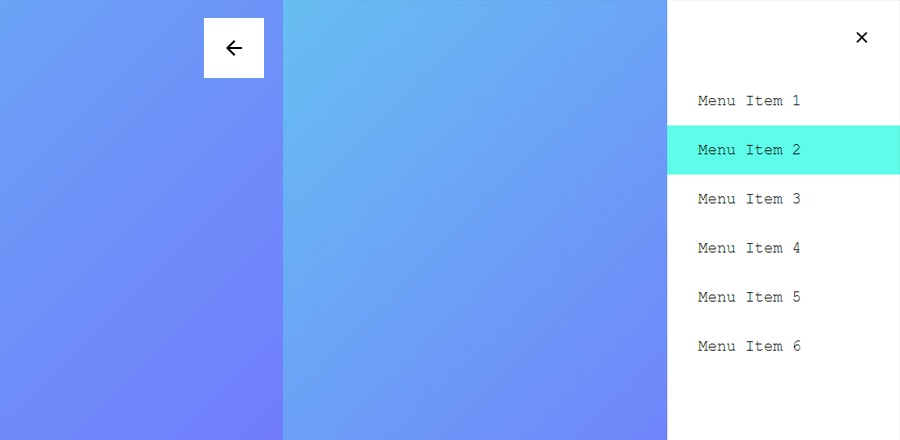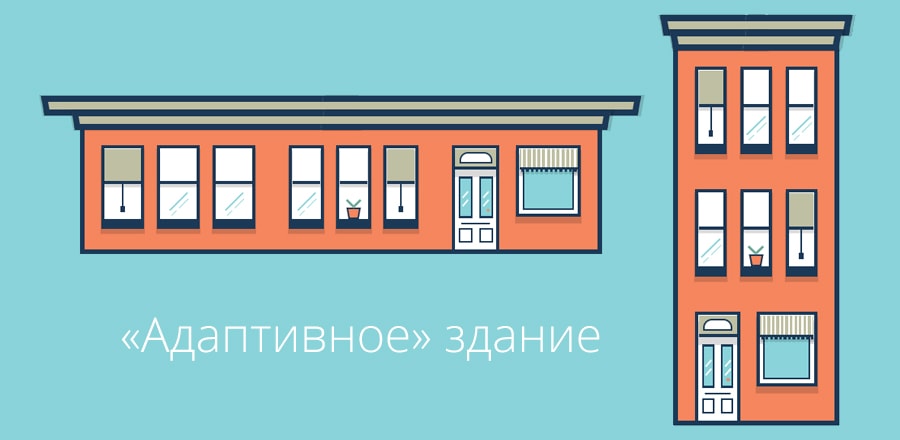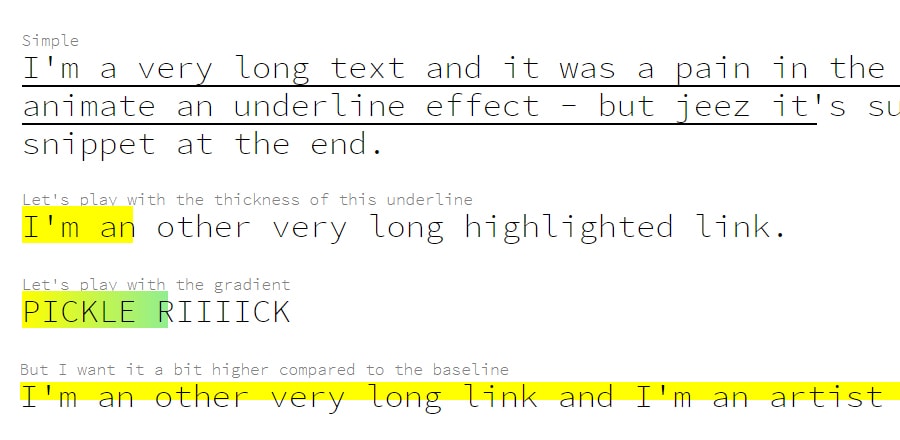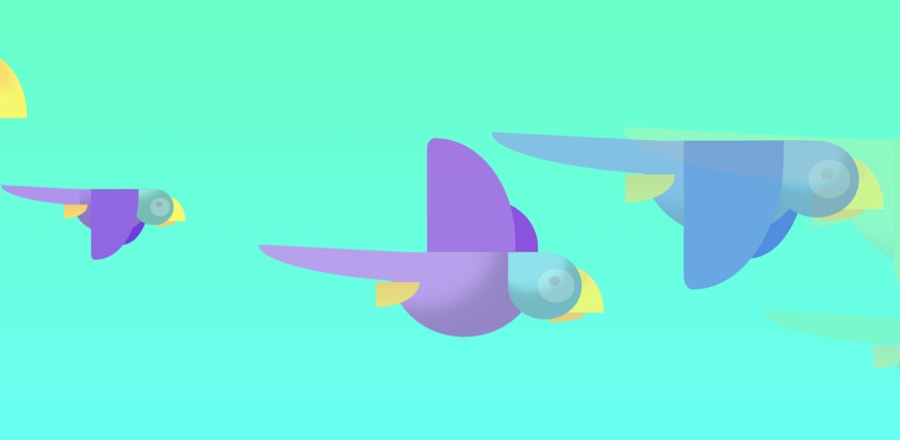Одуванчики в траве

Рандомная генерация травы с одуванчиками. При движении курсора, трава реагирует на его положение и отклоняется в противоположные стороны.
HTML
<button class="btn" onclick="field.init()">Generate field</button>CSS
html,
body {
margin: 0;
padding: 0;
height: 100%;
font-size: 18px;
}
body {
font-family: "Questrial", sans-serif;
background-color: #fff9ed;
display: flex;
flex-direction:column-reverse;
align-items: center;
justify-content: center;
overflow: hidden;
}
.btn {
font-family:inherit;
font-size: inherit;
background: white;
padding: 0.3rem 1rem;
border: 3px solid black;
box-shadow: 0 0 0 black;
transition: all 0.2s;
}
.btn:hover {
box-shadow: 0.4rem 0.4rem 0 black;
transform: translate(-0.4rem, -0.4rem);
}
.btn:active {
box-shadow: 0 0 0 black;
transform: translate(0, 0);
}JS
/*
* A speed-improved perlin and simplex noise algorithms for 2D.
*
* Based on example code by Stefan Gustavson (stegu@itn.liu.se).
* Optimisations by Peter Eastman (peastman@drizzle.stanford.edu).
* Better rank ordering method by Stefan Gustavson in 2012.
* Converted to jаvascript by Joseph Gentle.
*
* Version 2012-03-09
*
* This code was placed in the public domain by its original author,
* Stefan Gustavson. You may use it as you see fit, but
* attribution is appreciated.
*
*/
(function(global){
var module = global.noise = {};
function Grad(x, y, z) {
this.x = x; this.y = y; this.z = z;
}
Grad.prototype.dot2 = function(x, y) {
return this.x*x + this.y*y;
};
Grad.prototype.dot3 = function(x, y, z) {
return this.x*x + this.y*y + this.z*z;
};
var grad3 = [new Grad(1,1,0),new Grad(-1,1,0),new Grad(1,-1,0),new Grad(-1,-1,0),
new Grad(1,0,1),new Grad(-1,0,1),new Grad(1,0,-1),new Grad(-1,0,-1),
new Grad(0,1,1),new Grad(0,-1,1),new Grad(0,1,-1),new Grad(0,-1,-1)];
var p = [151,160,137,91,90,15,
131,13,201,95,96,53,194,233,7,225,140,36,103,30,69,142,8,99,37,240,21,10,23,
190, 6,148,247,120,234,75,0,26,197,62,94,252,219,203,117,35,11,32,57,177,33,
88,237,149,56,87,174,20,125,136,171,168, 68,175,74,165,71,134,139,48,27,166,
77,146,158,231,83,111,229,122,60,211,133,230,220,105,92,41,55,46,245,40,244,
102,143,54, 65,25,63,161, 1,216,80,73,209,76,132,187,208, 89,18,169,200,196,
135,130,116,188,159,86,164,100,109,198,173,186, 3,64,52,217,226,250,124,123,
5,202,38,147,118,126,255,82,85,212,207,206,59,227,47,16,58,17,182,189,28,42,
223,183,170,213,119,248,152, 2,44,154,163, 70,221,153,101,155,167, 43,172,9,
129,22,39,253, 19,98,108,110,79,113,224,232,178,185, 112,104,218,246,97,228,
251,34,242,193,238,210,144,12,191,179,162,241, 81,51,145,235,249,14,239,107,
49,192,214, 31,181,199,106,157,184, 84,204,176,115,121,50,45,127, 4,150,254,
138,236,205,93,222,114,67,29,24,72,243,141,128,195,78,66,215,61,156,180];
// To remove the need for index wrapping, double the permutation table length
var perm = new Array(512);
var gradP = new Array(512);
// This isn't a very good seeding function, but it works ok. It supports 2^16
// different seed values. Write something better if you need more seeds.
module.seed = function(seed) {
if(seed > 0 && seed < 1) {
// Scale the seed out
seed *= 65536;
}
seed = Math.floor(seed);
if(seed < 256) {
seed |= seed << 8;
}
for(var i = 0; i < 256; i++) {
var v;
if (i & 1) {
v = p[i] ^ (seed & 255);
} else {
v = p[i] ^ ((seed>>8) & 255);
}
perm[i] = perm[i + 256] = v;
gradP[i] = gradP[i + 256] = grad3[v % 12];
}
};
module.seed(0);
/*
for(var i=0; i<256; i++) {
perm[i] = perm[i + 256] = p[i];
gradP[i] = gradP[i + 256] = grad3[perm[i] % 12];
}*/
// Skewing and unskewing factors for 2, 3, and 4 dimensions
var F2 = 0.5*(Math.sqrt(3)-1);
var G2 = (3-Math.sqrt(3))/6;
var F3 = 1/3;
var G3 = 1/6;
// 2D simplex noise
module.simplex2 = function(xin, yin) {
var n0, n1, n2; // Noise contributions from the three corners
// Skew the input space to determine which simplex cell we're in
var s = (xin+yin)*F2; // Hairy factor for 2D
var i = Math.floor(xin+s);
var j = Math.floor(yin+s);
var t = (i+j)*G2;
var x0 = xin-i+t; // The x,y distances from the cell origin, unskewed.
var y0 = yin-j+t;
// For the 2D case, the simplex shape is an equilateral triangle.
// Determine which simplex we are in.
var i1, j1; // Offsets for second (middle) corner of simplex in (i,j) coords
if(x0>y0) { // lower triangle, XY order: (0,0)->(1,0)->(1,1)
i1=1; j1=0;
} else { // upper triangle, YX order: (0,0)->(0,1)->(1,1)
i1=0; j1=1;
}
// A step of (1,0) in (i,j) means a step of (1-c,-c) in (x,y), and
// a step of (0,1) in (i,j) means a step of (-c,1-c) in (x,y), where
// c = (3-sqrt(3))/6
var x1 = x0 - i1 + G2; // Offsets for middle corner in (x,y) unskewed coords
var y1 = y0 - j1 + G2;
var x2 = x0 - 1 + 2 * G2; // Offsets for last corner in (x,y) unskewed coords
var y2 = y0 - 1 + 2 * G2;
// Work out the hashed gradient indices of the three simplex corners
i &= 255;
j &= 255;
var gi0 = gradP[i+perm[j]];
var gi1 = gradP[i+i1+perm[j+j1]];
var gi2 = gradP[i+1+perm[j+1]];
// Calculate the contribution from the three corners
var t0 = 0.5 - x0*x0-y0*y0;
if(t0<0) {
n0 = 0;
} else {
t0 *= t0;
n0 = t0 * t0 * gi0.dot2(x0, y0); // (x,y) of grad3 used for 2D gradient
}
var t1 = 0.5 - x1*x1-y1*y1;
if(t1<0) {
n1 = 0;
} else {
t1 *= t1;
n1 = t1 * t1 * gi1.dot2(x1, y1);
}
var t2 = 0.5 - x2*x2-y2*y2;
if(t2<0) {
n2 = 0;
} else {
t2 *= t2;
n2 = t2 * t2 * gi2.dot2(x2, y2);
}
// Add contributions from each corner to get the final noise value.
// The result is scaled to return values in the interval [-1,1].
return 70 * (n0 + n1 + n2);
};
// 3D simplex noise
module.simplex3 = function(xin, yin, zin) {
var n0, n1, n2, n3; // Noise contributions from the four corners
// Skew the input space to determine which simplex cell we're in
var s = (xin+yin+zin)*F3; // Hairy factor for 2D
var i = Math.floor(xin+s);
var j = Math.floor(yin+s);
var k = Math.floor(zin+s);
var t = (i+j+k)*G3;
var x0 = xin-i+t; // The x,y distances from the cell origin, unskewed.
var y0 = yin-j+t;
var z0 = zin-k+t;
// For the 3D case, the simplex shape is a slightly irregular tetrahedron.
// Determine which simplex we are in.
var i1, j1, k1; // Offsets for second corner of simplex in (i,j,k) coords
var i2, j2, k2; // Offsets for third corner of simplex in (i,j,k) coords
if(x0 >= y0) {
if(y0 >= z0) { i1=1; j1=0; k1=0; i2=1; j2=1; k2=0; }
else if(x0 >= z0) { i1=1; j1=0; k1=0; i2=1; j2=0; k2=1; }
else { i1=0; j1=0; k1=1; i2=1; j2=0; k2=1; }
} else {
if(y0 < z0) { i1=0; j1=0; k1=1; i2=0; j2=1; k2=1; }
else if(x0 < z0) { i1=0; j1=1; k1=0; i2=0; j2=1; k2=1; }
else { i1=0; j1=1; k1=0; i2=1; j2=1; k2=0; }
}
// A step of (1,0,0) in (i,j,k) means a step of (1-c,-c,-c) in (x,y,z),
// a step of (0,1,0) in (i,j,k) means a step of (-c,1-c,-c) in (x,y,z), and
// a step of (0,0,1) in (i,j,k) means a step of (-c,-c,1-c) in (x,y,z), where
// c = 1/6.
var x1 = x0 - i1 + G3; // Offsets for second corner
var y1 = y0 - j1 + G3;
var z1 = z0 - k1 + G3;
var x2 = x0 - i2 + 2 * G3; // Offsets for third corner
var y2 = y0 - j2 + 2 * G3;
var z2 = z0 - k2 + 2 * G3;
var x3 = x0 - 1 + 3 * G3; // Offsets for fourth corner
var y3 = y0 - 1 + 3 * G3;
var z3 = z0 - 1 + 3 * G3;
// Work out the hashed gradient indices of the four simplex corners
i &= 255;
j &= 255;
k &= 255;
var gi0 = gradP[i+ perm[j+ perm[k ]]];
var gi1 = gradP[i+i1+perm[j+j1+perm[k+k1]]];
var gi2 = gradP[i+i2+perm[j+j2+perm[k+k2]]];
var gi3 = gradP[i+ 1+perm[j+ 1+perm[k+ 1]]];
// Calculate the contribution from the four corners
var t0 = 0.6 - x0*x0 - y0*y0 - z0*z0;
if(t0<0) {
n0 = 0;
} else {
t0 *= t0;
n0 = t0 * t0 * gi0.dot3(x0, y0, z0); // (x,y) of grad3 used for 2D gradient
}
var t1 = 0.6 - x1*x1 - y1*y1 - z1*z1;
if(t1<0) {
n1 = 0;
} else {
t1 *= t1;
n1 = t1 * t1 * gi1.dot3(x1, y1, z1);
}
var t2 = 0.6 - x2*x2 - y2*y2 - z2*z2;
if(t2<0) {
n2 = 0;
} else {
t2 *= t2;
n2 = t2 * t2 * gi2.dot3(x2, y2, z2);
}
var t3 = 0.6 - x3*x3 - y3*y3 - z3*z3;
if(t3<0) {
n3 = 0;
} else {
t3 *= t3;
n3 = t3 * t3 * gi3.dot3(x3, y3, z3);
}
// Add contributions from each corner to get the final noise value.
// The result is scaled to return values in the interval [-1,1].
return 32 * (n0 + n1 + n2 + n3);
};
// ##### Perlin noise stuff
function fade(t) {
return t*t*t*(t*(t*6-15)+10);
}
function lerp(a, b, t) {
return (1-t)*a + t*b;
}
// 2D Perlin Noise
module.perlin2 = function(x, y) {
// Find unit grid cell containing point
var X = Math.floor(x), Y = Math.floor(y);
// Get relative xy coordinates of point within that cell
x = x - X; y = y - Y;
// Wrap the integer cells at 255 (smaller integer period can be introduced here)
X = X & 255; Y = Y & 255;
// Calculate noise contributions from each of the four corners
var n00 = gradP[X+perm[Y]].dot2(x, y);
var n01 = gradP[X+perm[Y+1]].dot2(x, y-1);
var n10 = gradP[X+1+perm[Y]].dot2(x-1, y);
var n11 = gradP[X+1+perm[Y+1]].dot2(x-1, y-1);
// Compute the fade curve value for x
var u = fade(x);
// Interpolate the four results
return lerp(
lerp(n00, n10, u),
lerp(n01, n11, u),
fade(y));
};
// 3D Perlin Noise
module.perlin3 = function(x, y, z) {
// Find unit grid cell containing point
var X = Math.floor(x), Y = Math.floor(y), Z = Math.floor(z);
// Get relative xyz coordinates of point within that cell
x = x - X; y = y - Y; z = z - Z;
// Wrap the integer cells at 255 (smaller integer period can be introduced here)
X = X & 255; Y = Y & 255; Z = Z & 255;
// Calculate noise contributions from each of the eight corners
var n000 = gradP[X+ perm[Y+ perm[Z ]]].dot3(x, y, z);
var n001 = gradP[X+ perm[Y+ perm[Z+1]]].dot3(x, y, z-1);
var n010 = gradP[X+ perm[Y+1+perm[Z ]]].dot3(x, y-1, z);
var n011 = gradP[X+ perm[Y+1+perm[Z+1]]].dot3(x, y-1, z-1);
var n100 = gradP[X+1+perm[Y+ perm[Z ]]].dot3(x-1, y, z);
var n101 = gradP[X+1+perm[Y+ perm[Z+1]]].dot3(x-1, y, z-1);
var n110 = gradP[X+1+perm[Y+1+perm[Z ]]].dot3(x-1, y-1, z);
var n111 = gradP[X+1+perm[Y+1+perm[Z+1]]].dot3(x-1, y-1, z-1);
// Compute the fade curve value for x, y, z
var u = fade(x);
var v = fade(y);
var w = fade(z);
// Interpolate
return lerp(
lerp(
lerp(n000, n100, u),
lerp(n001, n101, u), w),
lerp(
lerp(n010, n110, u),
lerp(n011, n111, u), w),
v);
};
})(this);const PI = Math.PI,
TWO_PI = Math.PI * 2;
Util = {};
Util.timeStamp = function() {
return window.performance.now();
};
Util.random = function(min, max) {
return min + Math.random() * (max - min);
};
Util.map = function(a, b, c, d, e) {
return (a - b) / (c - b) * (e - d) + d;
};
Util.lerp = function(value1, value2, amount) {
return value1 + (value2 - value1) * amount;
};
Util.array2D = function(tableau, array_width){
var result = [];
for (var i = 0; i < tableau.length; i += array_width) result.push(tableau.slice(i, i + array_width));
return result;
};
Util.threeAngle = function(p0,p1,p2){
var b = Math.pow(p1.x-p0.x,2) + Math.pow(p1.y-p0.y,2),
a = Math.pow(p1.x-p2.x,2) + Math.pow(p1.y-p2.y,2),
c = Math.pow(p2.x-p0.x,2) + Math.pow(p2.y-p0.y,2);
return Math.acos( (a+b-c) / Math.sqrt(4*a*b) );
}
Tween = {};
Tween.linear = function(currentTime, start, degreeOfChange, duration) {
return degreeOfChange * currentTime / duration + start;
};
Tween.easeInOutQuad = function(t, b, c, d) {
t /= d / 2;
if (t < 1) return c / 2 * t * t + b;
t--;
return -c / 2 * (t * (t - 2) - 1) + b;
};
Tween.easeInOutExpo = function(t, b, c, d) {
t /= d / 2;
if (t < 1) return c / 2 * Math.pow(2, 10 * (t - 1)) + b;
t--;
return c / 2 * (-Math.pow(2, -10 * t) + 2) + b;
};
class Vector{
constructor(x,y){
this.x = x || 0;
this.y = y || 0;
}
set(x,y){
this.x = x;
this.y = y;
}
fromAngle(angle){
let x = Math.cos(angle),
y = Math.sin(angle);
return new Vector(x,y);
}
add(vector){
this.x += vector.x;
this.y += vector.y;
}
sub(vector){
this.x -= vector.x;
this.y -= vector.y;
}
mult(scalar){
this.x *= scalar;
this.y *= scalar;
}
div(scalar){
this.x /= scalar;
this.y /= scalar;
}
dot(vector){
return vector.x * this.x + vector.y * this.y;
}
limit(limit_value){
if(this.mag() > limit_value) this.setMag(limit_value);
}
mag(){
return Math.hypot(this.x,this.y);
}
setMag(new_mag){
if(this.mag() > 0){
this.normalize();
}else{
this.x = 1;
this.y = 0;
}
this.mult(new_mag);
}
normalize(){
let mag = this.mag();
if(mag > 0){
this.x /= mag;
this.y /= mag;
}
}
heading(){
return Math.atan2(this.x,this.y);
}
setHeading(angle){
let mag = this.mag();
this.x = Math.cos(angle) * mag;
this.y = Math.sin(angle) * mag;
}
dist(vector){
return new Vector(this.x - vector.x,this.y - vector.y).mag();
}
angle(vector){
return Math.atan2(vector.y - this.y, vector.x - this.x);
}
copy(){
return new Vector(this.x,this.y);
}
}// init canvas
let canvas = document.createElement("canvas"),
ctx = canvas.getContext("2d"),
H = (canvas.height = 600),
W = (canvas.width = 600);
document.body.appendChild(canvas);
ctx.lineCap = "round";
document.body.addEventListener("mousemove", event => mousemove(event), false);
let cursor = new Vector(0, 0);
function mousemove(event) {
cursor.x = event.pageX - canvas.offsetLeft;
cursor.y = event.pageY - canvas.offsetTop;
}
let gravity = new Vector(0, 0.6);
class Point {
constructor(x, y) {
this.position = new Vector(x, y);
this.old_position = new Vector(x, y);
this.pinned = false;
}
}
class Link {
constructor(p0, p1) {
this.p0 = p0;
this.p1 = p1;
this.length = p0.position.dist(p1.position);
}
}
class Blade {
constructor(x, y, size) {
this.position = new Vector(x, y);
this.size = size;
this.color = "black";
this.angle = -PI / 2 + Util.random(-PI / 4, PI / 4);
this.length = Util.map(size, 1, 10, 10, 160);
this.divisions = Math.ceil(Util.map(this.length, 10, 200, 3, 4));
this.stiffness = Util.random(2, 6);
this.thickness = Util.map(size, 1, 10, 1, 16);
this.points = [];
this.links = [];
// add points
for (let i = 0; i < this.divisions; i++) {
let separation = this.length / this.divisions * i;
let v = new Vector(0, 0);
v.setMag(separation);
v.setHeading(this.angle);
v.add(this.position);
this.points.push(new Point(v.x, v.y));
}
this.points[0].pinned = true;
for (let i = 0; i < this.divisions - 1; i++) {
this.links.push(new Link(this.points[i], this.points[i + 1]));
}
}
update() {
for (let i = 0; i < this.points.length; i++) {
let point = this.points[i];
if (point.pinned) continue;
let velocity = point.position.copy();
velocity.sub(point.old_position);
velocity.mult(0.98);
point.old_position = point.position.copy();
point.position.add(velocity);
point.position.x += Math.cos(this.angle) * (this.stiffness / i);
point.position.y += Math.sin(this.angle) * (this.stiffness / i);
let distance = point.position.dist(cursor);
if (distance < force_contact.size) {
let force = new Vector();
let angle = point.position.angle(cursor);
force.setMag(Util.map(distance, 0, force_contact.size, 1, 0));
force.setHeading(angle);
point.position.sub(force);
}
point.position.add(wind.value);
point.position.add(gravity);
}
for (let i = 0; i < 5; i++) {
this.links.forEach(link => {
let distance = link.p0.position.dist(link.p1.position),
difference = link.length - distance,
percent = difference / distance / 2;
let offset = new Vector(
(link.p1.position.x - link.p0.position.x) * percent,
(link.p1.position.y - link.p0.position.y) * percent
);
if (!link.p0.pinned) {
link.p0.position.sub(offset);
}
if (!link.p1.pinned) {
link.p1.position.add(offset);
}
});
}
}
draw() {
ctx.fillStyle = this.color;
stroke(this.points.map(point => point.position), this.thickness);
ctx.fill();
}
}
class Dandelion {
constructor(x, y, size) {
this.position = new Vector(x, y);
this.size = size;
this.color = "#202236";
this.max_length = 220;
this.angle = -PI / 2 + Util.random(-0.3, 0.3);
this.length = Util.map(size, 1, 10, 60, this.max_length);
this.divisions = Math.ceil(
Util.map(this.length, 60, this.max_length, 3, 4)
);
this.stiffness = Util.random(4, 8);
this.thickness = Util.map(this.length, 60, this.max_length, 3, 6);
this.head_size = Util.map(this.thickness, 3, 6, 6, 18);
this.points = [];
this.links = [];
// add points
for (let i = 0; i < this.divisions; i++) {
let separation = this.length / this.divisions * i;
let v = new Vector(0, 0);
v.setMag(separation);
v.setHeading(this.angle);
v.add(this.position);
this.points.push(new Point(v.x, v.y));
}
this.points[0].pinned = true;
for (let i = 0; i < this.divisions - 1; i++) {
this.links.push(new Link(this.points[i], this.points[i + 1]));
}
}
update() {
for (let i = 0; i < this.points.length; i++) {
let point = this.points[i];
if (point.pinned) continue;
let velocity = point.position.copy();
velocity.sub(point.old_position);
velocity.mult(0.98);
point.old_position = point.position.copy();
point.position.add(velocity);
point.position.x += Math.cos(this.angle) * (this.stiffness / i);
point.position.y += Math.sin(this.angle) * (this.stiffness / i);
let distance = point.position.dist(cursor);
if (distance < force_contact.size) {
let force = new Vector();
let angle = point.position.angle(cursor);
force.setMag(Util.map(distance, 0, force_contact.size, 1.6, 0));
force.setHeading(angle);
point.position.sub(force);
}
point.position.add(wind.value);
point.position.add(gravity);
}
for (let i = 0; i < 5; i++) {
this.links.forEach(link => {
let distance = link.p0.position.dist(link.p1.position),
difference = link.length - distance,
percent = difference / distance / 2;
let offset = new Vector(
(link.p1.position.x - link.p0.position.x) * percent,
(link.p1.position.y - link.p0.position.y) * percent
);
if (!link.p0.pinned) {
link.p0.position.sub(offset);
}
if (!link.p1.pinned) {
link.p1.position.add(offset);
}
});
}
}
draw() {
ctx.lineWidth = this.thickness;
ctx.strokeStyle = this.color;
ctx.beginPath();
smoothLine(this.points.map(point => point.position));
ctx.stroke();
// head
ctx.fillStyle = "#c2daf0";
ctx.beginPath();
ctx.arc(
this.points[this.points.length - 1].position.x,
this.points[this.points.length - 1].position.y,
this.head_size,
0,
2 * Math.PI
);
ctx.fill();
}
}
let tige_colors = ["#202236", "#362520", "#57374c"];
let field = {
plants: [],
init: function() {
this.plants = [];
let div = Math.floor(Util.random(16, 16));
noise.seed(Math.random());
let perspective = Util.random(0.5, 1);
for (let y = H; y > 0; y -= div) {
for (let x = W; x > 0; x -= div) {
let new_pos = new Vector(
x + Util.random(0, div),
y + Util.random(0, div)
);
let center = new Vector(W / 2, H / 2);
let min_distance = Math.min(W / 2, H / 2);
let distance_from_center = new_pos.dist(center);
let noise_value = noise.simplex2(x / 100, y / 100);
let new_size =
Math.abs(noise_value) *
Util.map(distance_from_center, 0, min_distance, 16, 2);
if (distance_from_center > min_distance || new_size < 4) continue;
new_pos.y *= perspective;
new_pos.y -= H / 2 * perspective - H / 2;
if (Util.random(0, 1) > 0.97) {
let d = new Dandelion(new_pos.x, new_pos.y, new_size);
d.color = tige_colors[Math.floor(Util.random(0, tige_colors.length))];
this.plants.unshift(d);
let b = new Blade(new_pos.x, new_pos.y, new_size * 1.2);
b.color = lerpColor(
"#095880",
"#33b03b",
Util.map(distance_from_center, 0, min_distance, 1, 0)
);
b.thickness *= Util.random(1.2, 2.4);
this.plants.unshift(b);
} else {
let b = new Blade(new_pos.x, new_pos.y, new_size);
b.color = lerpColor(
"#095880",
"#33b03b",
Util.map(distance_from_center, 0, min_distance, 1, 0)
);
if (Util.random(0, 1) > 0.9) {
b.color = lerpColor(
"#a83d16",
"#33b03b",
Util.map(distance_from_center, 0, min_distance, 1, 0)
);
}
this.plants.unshift(b);
}
/*
if(y <H/2){
b.color = lerpColor(
"#fff9ed",
b.color,
Util.map(y, 0, H/2, 0, 1)
);
}*/
}
}
},
render: function() {
this.plants.forEach(plant => {
plant.draw();
});
this.plants.forEach(plant => {
plant.update();
});
}
};
field.init();
let wind = {
value: new Vector(0, 0),
reset: function() {
this.time_start = new Date();
this.start = this.value.x;
this.duration = Util.random(200, 2000);
this.goal = Util.random(-0.4, 0.4);
},
update: function() {
let time = new Date() - this.time_start;
if (time < this.duration) {
this.value.x = Tween.linear(
time,
this.start,
this.goal - this.start,
this.duration
);
} else {
setTimeout(() => {
this.reset();
}, Util.random(100, 3000));
}
}
};
wind.reset();
let force_contact = {
size: 200,
center: new Vector(W / 2, H / 2),
draw: function() {
let opacity = Util.map(
cursor.dist(this.center),
Math.min(W / 4, H / 4),
Math.min(W / 2, H / 2),
0.3,
0
);
ctx.fillStyle = "rgba(20,40,20," + opacity + ")";
ctx.beginPath();
ctx.arc(cursor.x, cursor.y, 30, 0, 2 * Math.PI);
ctx.fill();
}
};
update();
function update() {
ctx.clearRect(0, 0, W, H);
field.render();
wind.update();
force_contact.draw();
requestAnimationFrame(update);
}
function stroke(points, max_width) {
let side_1 = [];
let side_2 = [];
for (let i = 0; i < points.length; i++) {
let p = points[i];
let angle = 0;
if (i === 0) {
// first point
angle = p.angle(points[i + 1]) + Math.PI / 2;
} else if (i === points.length - 1) {
// last point
angle = p.angle(points[i - 1]) - Math.PI / 2;
} else {
// intermediate point
let small = Math.max(p.angle(points[i + 1]), points[i - 1].angle(p));
angle = small + Util.threeAngle(points[i - 1], p, points[i + 1]) / 2;
}
let target = points.length - 1;
let width = Tween.easeInOutQuad(i, 0, target - i, target) * max_width;
// let width = Util.lerp(60, 0, i / points.length+1);
p_1 = new Vector(0, 0);
p_1.setMag(width);
p_1.setHeading(angle);
p_1.add(p);
p_2 = new Vector(0, 0);
p_2.setMag(width);
p_2.setHeading(angle + Math.PI);
p_2.add(p);
side_1.push(p_1);
side_2.unshift(p_2);
}
ctx.beginPath();
ctx.moveTo(side_1[0].x, side_1[0].y);
smoothEdges(side_1);
ctx.lineTo(side_2[0].x, side_2[0].y);
smoothEdges(side_2);
ctx.moveTo(side_2[side_2.length - 1].x, side_2[side_2.length - 1].y);
ctx.lineTo(side_1[0].x, side_1[0].y);
ctx.fill();
ctx.closePath();
ctx.restore();
}
function smoothEdges(points) {
for (i = 1; i < points.length - 2; i++) {
var xc = (points[i].x + points[i + 1].x) / 2;
var yc = (points[i].y + points[i + 1].y) / 2;
ctx.quadraticCurveTo(points[i].x, points[i].y, xc, yc);
}
ctx.quadraticCurveTo(
points[i].x,
points[i].y,
points[i + 1].x,
points[i + 1].y
);
}
function smoothLine(points) {
ctx.moveTo(points[0].x, points[0].y);
for (i = 1; i < points.length - 2; i++) {
var xc = (points[i].x + points[i + 1].x) / 2;
var yc = (points[i].y + points[i + 1].y) / 2;
ctx.quadraticCurveTo(points[i].x, points[i].y, xc, yc);
}
ctx.quadraticCurveTo(
points[i].x,
points[i].y,
points[i + 1].x,
points[i + 1].y
);
}
// https://gist.github.com/rosszurowski/67f04465c424a9bc0dae
function lerpColor(a, b, amount) {
var ah = parseInt(a.replace(/#/g, ""), 16),
ar = ah >> 16,
ag = (ah >> 8) & 0xff,
ab = ah & 0xff,
bh = parseInt(b.replace(/#/g, ""), 16),
br = bh >> 16,
bg = (bh >> 8) & 0xff,
bb = bh & 0xff,
rr = ar + amount * (br - ar),
rg = ag + amount * (bg - ag),
rb = ab + amount * (bb - ab);
return (
"#" + (((1 << 24) + (rr << 16) + (rg << 8) + rb) | 0).toString(16).slice(1)
);
}



